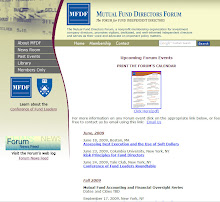Yesterday, the SEC released its study on mark-to-market accounting mandated by the Emergency Economic Stabilization Act 0f 2008. The report recommends against suspending fair value accounting standards, but does recommend changes to the accounting for significant impairments and the development of additional guidance for determining fair value of investments in inactive markets, including situations where market prices are not readily available.
Among its key findings, the report finds that investors and market participants generally believe fair value accounting increases financial reporting transparency and facilitates better investment decision-making. The report also observes that fair value accounting did not appear to play a meaningful role in the bank failures that occurred in 2008. Rather, bank failures in the U.S. appeared to be the result of growing probable credit losses, concerns about asset quality, and in certain cases, eroding lender and investor confidence.
Rather than a crisis precipitated by fair value accounting, the crisis was a “run on the bank” at certain institutions, manifesting itself in counterparties reducing or eliminating the various credit and other risk exposures they had to each firm. This was, in part, the result of the massive de-leveraging of balance sheets by market participants and reduced appetite for risk as margin calls increased, putting enormous pressure on asset prices and creating a “self-reinforcing downward spiral of higher haircuts, forced sales, lower prices, higher volatility, and still lower prices.
While the report does not recommend suspending existing fair value standards, it makes certain recommendations to improve their application, including:
- Development of additional guidance and other tools for determining fair value when relevant market information is not available in illiquid or inactive markets, including consideration of the need for guidance to assist companies and auditors in addressing:
- How to determine when markets become inactive and whether a transaction or group of transactions are forced or distressed
- How the impact of a change in credit risk on the value of an asset or liability should be estimated
- When should observable market information be supplemented with and/or reliance placed on unobservable information in the form of management estimates
- How to confirm that assumptions utilized are those that would be used by market participants and not just a specific entity
- Enhancement of existing disclosure and presentation requirements related to the effect of fair value in the financial statements.
- Educational efforts, including those to reinforce the need for management judgment in the determination of fair value estimates.
- Examination by the FASB of the impact of liquidity in the measurement of fair value, including whether additional application and/or disclosure guidance is warranted.
- Assessment by the FASB of whether the incorporation of credit risk in the measurement of liabilities provides useful information to investors, including whether sufficient transparency is provided currently in practice.
- reducing the number of models utilized for determining and reporting impairments,
- considering whether the utility of information available to investors would be improved by providing additional information about whether current declines in value are consistent with management expectations of the underlying credit quality, and
- reconsidering current restrictions on the ability to record increases in value (when market prices recover).





